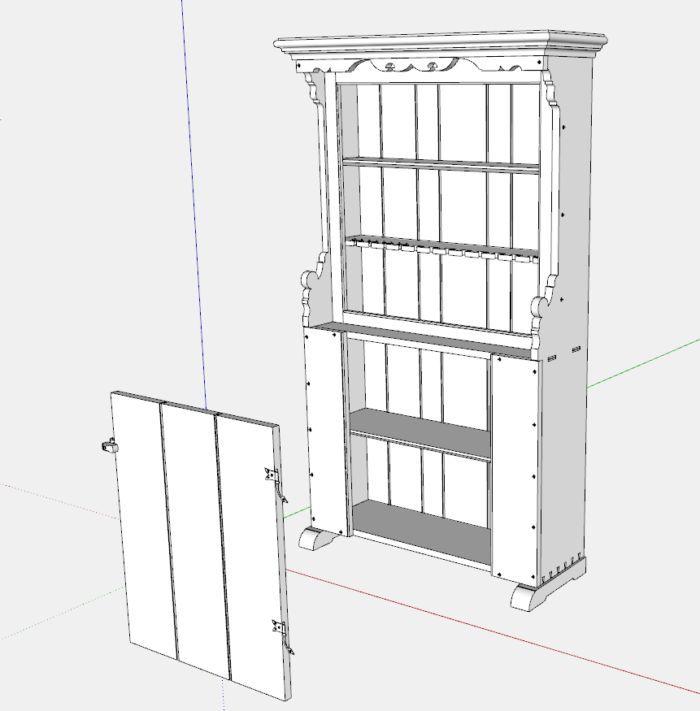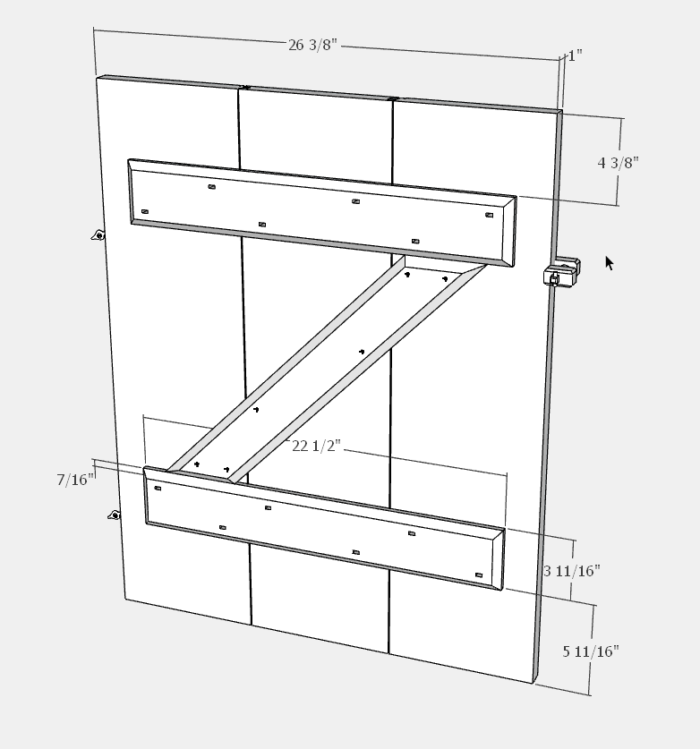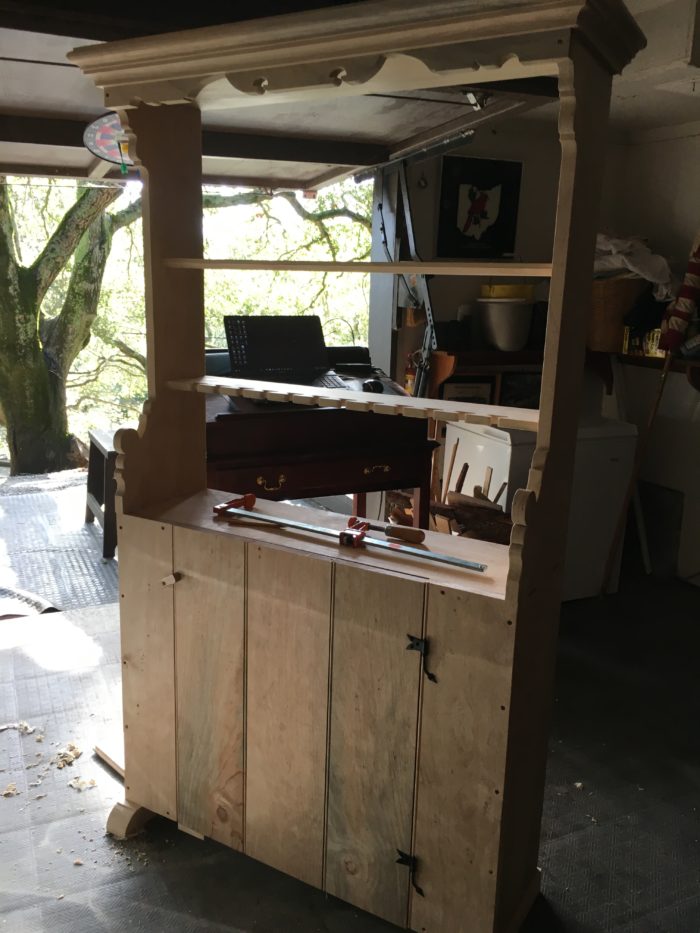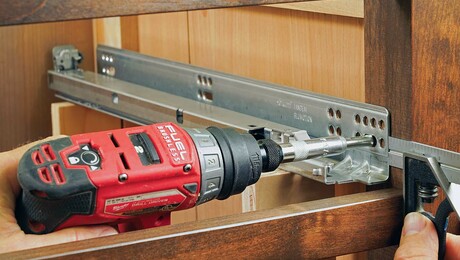Continuing on my Kitchen Dresser project, I’ll get to the design for the tongue-and-groove door. In this 1750s Pennsylvania German piece, both the back panel and the front door use this style of joinery, which also includes a 1/4-in. beaded edge. A paneled door would be a much safer design as it inherently allows for seasonal wood movement. To accommodate wood movement in the tongue-and-groove door is much more complicated. The joints cannot be glued and must be able to move, allowing the door width to expand and contract. As shown in the video below, I include 1/16-in. gaps at each joint and on the right and left edges. To maintain door integrity, horizontal and diagonal battens are connected to the back face of the door. The battens are attached with wood screws in slotted shank holes, again to allow for the seasonal movement.
Here is the dresser assembly with the door removed from its opening.

The back face of the door includes two horizontal battens and one diagonal batten held with wood screws in slotted shank holes (no glue).

This shows the top edges of the assembled door and copies of the two components pulled out in front. You can see the 1/16-in. gaps in the tongue-and-groove joints.

Here is the video:
Here is the progress in the shop—all material is Monterey Pine.

Tim
@KillenWOOD
Fine Woodworking Recommended Products

Blum Drawer Front Adjuster Marking Template

























Log in or create an account to post a comment.
Sign up Log in